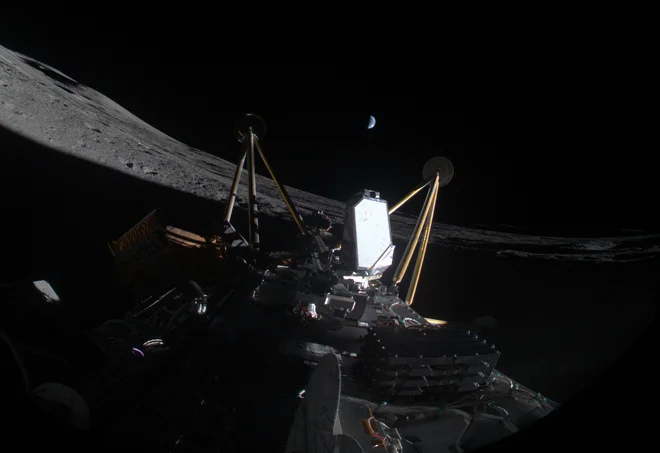Overturned Athena « dead » on the moon

Concerned faces at Intuitive Machines Control Center have made it clear that a Nova-C resort, named Athena, will not be able to explore the moon, After landing on the surface on Thursday at 6.30 p.
The private spacecraft overturned upon landing, initially pumping solar energy, but then the company admitted that the expedition was over. The Athens vessel reached the ground near the south pole, where it was expected to explore the surface for ten days and look for water ice. But because it overturned, and since the solar panels were incorrectly, the batteries could not successfully charge the battery, and consequently the vessel could not be heated to defy low temperatures.
This is how the story repeated: last February, the Odysseus Machines's Odysseus from Houston overturned to the side last February. This indicates that the shape of the vessel is most likely to be wrong, especially problematic legs of the lander.
At first after Thursday's landing, they thought that the expedition could be resolved, all hopes were buried by photographs. The probe painted the surroundings and made it clear that the vessel was tilted and that two landing legs protrude into the « sky ».
« Due to the direction of the sun, the orientation of solar panels and the extremely low temperatures in the crater, intuitive Machines does not expect Athena to be recharged, » the company wrote in the statement of the elimination of IM-2.
The vessel helped the company to fund NASA, which also compiled key scientific instruments, among these drills, which would rotate below the surface to inspect how much water there is. There was also a jumping robot of Grace, which was supposed to jump into a deep crater in which the sun never shines. This research is important for NASA, which wants to land near the south pole with a crew in the Artemis program. They want to land in mid -2027.
Lunar Trailblazer also lost
Athens traveled from Earth at the end of February with NASA's Lunar Trailblazer. A small satellite is supposed to produce surface maps with maximum resolution so far to determine where the water is, what form it is, how much it is and how it changes. However, the satellite is most likely to reach the moon orbit, states Ars Technica. They lost contact with the satellite after the vessel did not turn right to draw energy. As a result, the probe also could not turn on its engines to head towards the moon.






:format(webp)/s3/static.nrc.nl/images/gn4/stripped/data98397542-ff3861.jpg)
